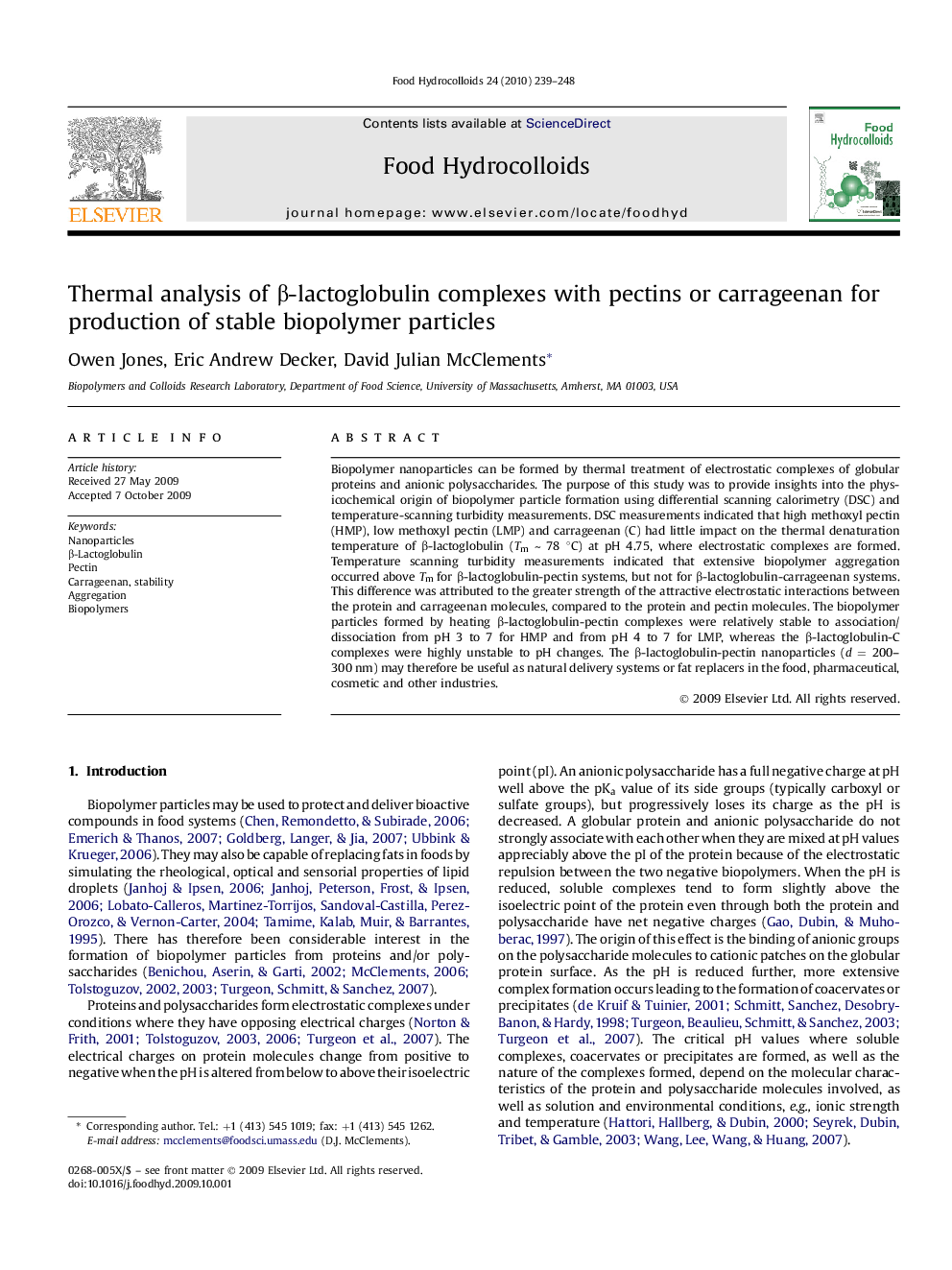| Article ID | Journal | Published Year | Pages | File Type |
|---|---|---|---|---|
| 605028 | Food Hydrocolloids | 2010 | 10 Pages |
Biopolymer nanoparticles can be formed by thermal treatment of electrostatic complexes of globular proteins and anionic polysaccharides. The purpose of this study was to provide insights into the physicochemical origin of biopolymer particle formation using differential scanning calorimetry (DSC) and temperature-scanning turbidity measurements. DSC measurements indicated that high methoxyl pectin (HMP), low methoxyl pectin (LMP) and carrageenan (C) had little impact on the thermal denaturation temperature of β-lactoglobulin (Tm ∼ 78 °C) at pH 4.75, where electrostatic complexes are formed. Temperature scanning turbidity measurements indicated that extensive biopolymer aggregation occurred above Tm for β-lactoglobulin-pectin systems, but not for β-lactoglobulin-carrageenan systems. This difference was attributed to the greater strength of the attractive electrostatic interactions between the protein and carrageenan molecules, compared to the protein and pectin molecules. The biopolymer particles formed by heating β-lactoglobulin-pectin complexes were relatively stable to association/dissociation from pH 3 to 7 for HMP and from pH 4 to 7 for LMP, whereas the β-lactoglobulin-C complexes were highly unstable to pH changes. The β-lactoglobulin-pectin nanoparticles (d = 200–300 nm) may therefore be useful as natural delivery systems or fat replacers in the food, pharmaceutical, cosmetic and other industries.
Graphical abstractProposed mechanism for biopolymer formation upon heating protein-polysaccharide electrostatic complexes: globular proteins unfold upon heating, and then aggregate in solution to form biopolymer particles that consist of a protein core and polysaccharide shell.Figure optionsDownload full-size imageDownload as PowerPoint slide
